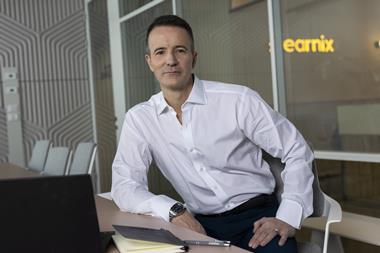With a potential post-pandemic capacity crunch in M&A, CFC’s Angus Marshall gives his view on the current environment and why corporates are looking at warranty and indemnity insurance
There is a growing number of corporates and private equity investors taking on smaller or bolt-on type portfolio acquisitions that are going uninsured.
According to Angus Marshall, CFC Underwriting’s global practice leader in transaction liability, the firm identified a gap in the lower-mid market, with these smaller transactions not having insurance.
Marshall believes this is because underwriters who assess the risk for these deals view them as not economically worth their while as they are too small.
Off the back of this, therefore, is a demand for warranty and indemnity insurance (W&I) to cover such acquisitions as well as the need to find a solution that insures these high volume yet low value deals.
Broker Howden Insurance predicts a post-pandemic capacity crunch for the M&A market in 2021.
Capacity crunch
When asked about the potential post-pandemic capacity crunch, Marshall tells Insurance Times: “The pandemic has probably sped up some inevitable development in the M&A market.”
But he stresses that the term ‘crunch’ was too strong in this instance. One of the most relevant influences on available capacity is the rating environment, Marshall says.
“For various reasons, the rating environment for M&A seems to be cyclical [compared] to the rating environment for other financial lines products, so you have got a natural decision point for a lot of insurance capacity,” he adds.
However, Marshall says that: “The M&A market, given the nature in which we underwrite these policies, there is far more flexibility responding to these types of events through exclusions in underwriting. The market responded fairly quickly to the risks posed by Covid-19 and the economic downturn that ensued.
“I am not concerned that there is going to be some major trend in loss from Covid-19 in the M&A market. I think it is fair to say that any economic downturn does nudge up notification rates – it is pretty obvious to underwriters that there will be an uptick in claims and we would expect that for the M&A market.”
For Marshall, M&A is his bread and butter and a market he knows very well. He was previously at AIG for six years; he worked as its head of M&A for nearly five years after having started off in a mergers and acquisitions role in emerging markets back in March 2013.
Bargain hunting
Meanwhile, it has been common knowledge that there are fewer deals in M&A to underwrite, especially over the course of the pandemic. Although Marshall admits this is the case, he says that dealmakers love a bit of disruption.
He continues: “Private equity investors with a large amount of ’dry powder’ [cash reserves] are going to be taking advantage of insurance companies that are much better value than they were previously and will be going bargain hunting.
“For any corporate or investor making acquisitions, political or economical uncertainty is a key barrier to people wanting to do deals. We are in a period of huge economic uncertainty, but I would add that we are close to coming out of this.”
Rate inadequacy
Howden previously cited that premium rates in M&A are no longer reflective of claims, however Marshall argues that this has not been the same for CFC.
“We have been laser focused ensuring there is rate adequacy and momentum in our portfolio,” he says.
He describes this rate trend as a “shock period” due to so few deals, however he also believes that MGAs are going to have to respond to this as there are more MGAs in this area than any other market.
Speaking about Howden’s prediction on a post-pandemic capacity crunch, he says: “Rates in Europe are dropping even further from record lows; if this capacity trend in 2021 comes to pass as Howden predicts, there will be an upper trend.”
Although CFC remains cautious, it is not inactive in the market.
Too many options
Marshall highlights a potential issue in Europe and Asia Pacific – too many underwriters. “Brokers find it difficult to navigate the market as there are now so many options. It’s not so much that there is excess capacity in the market, it’s that there is an excess of underwriting options,” he adds.
The reason there are so many options is that this line has been very successful and it is complementary to private equity acquisitions as it covers investors as they move through deals without having to worry about liability.
“There is also a huge amount of talent in the market, with some ambitious brokers and underwriters that have [innovated] and responded to client needs and provided commercially minded solutions,” he says.
Giving CFC’s transaction liability solution for portfolio acquisitions as an example, Marshall says that the product “gives buyers and sellers the certainty of recourse they require behind each transaction, but without hassle”. This launched back in July as part of a suite of transaction liability products.














































No comments yet